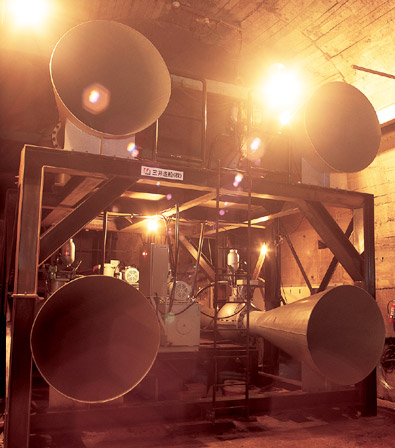 |
|
NIPPONIA No.23 December 15, 2002
|
|
Special Feature*
Subterranean Research Facilities
Attract Worldwide Attention
Surface air does not enter places deep under the ground, so the temperature and humidity there remain constant. High-tech experimental facilities in Japan are taking advantage of this ideal subterranean environment, and the results are attracting a great deal of interest from researchers around the world.
Written by Sakagami Kyoko and Takahashi Koki, Photos by Uchiyama Hideaki, Illustration by Creative Messenger
The world's best facility for gravity-free experiments
High-tech experiments in a gravity-free environment can lead to the development of new materials, promote biotech research, and teach us about conditions in outer space. Little wonder, then, that weightlessness, or microgravity, is in the news these days. At the Japan Microgravity Center (JAMIC) in Kamisunagawa-cho, Hokkaido, experiments create an almost complete state of weightlessness. The facility is used for research and development in different fields.
JAMIC's experimental system uses the central vertical shaft of an abandoned coal mine. The underground part of the facility goes straight down 710 meters into the earth. During experiments, a capsule free falls at a maximum speed of 360 km/hr—faster than the Shinkansen bullet train. For 10 seconds, the capsule is in a state of microgravity. A number of countries, including the United States (NASA), have microgravity research centers, but JAMIC has the world's fastest free fall and longest time in a state of microgravity.
The Kamisunagawa Microgravity Science Hall, located next to the Center, displays experimental devices and results achieved at the Center, and allows visitors to observe microgravity experiments. The Science Hall is making a name for itself in the field of weightlessness. 

Above: Rocket-shaped capsule used in microgravity experiments. In free fall, the capsule reaches a maximum speed of 360 km/hr, creating almost gravity-free conditions for 10 seconds.
Right: This device, used to stop the large capsule, is located 710 m below ground level.
|
|
 |
|
 |